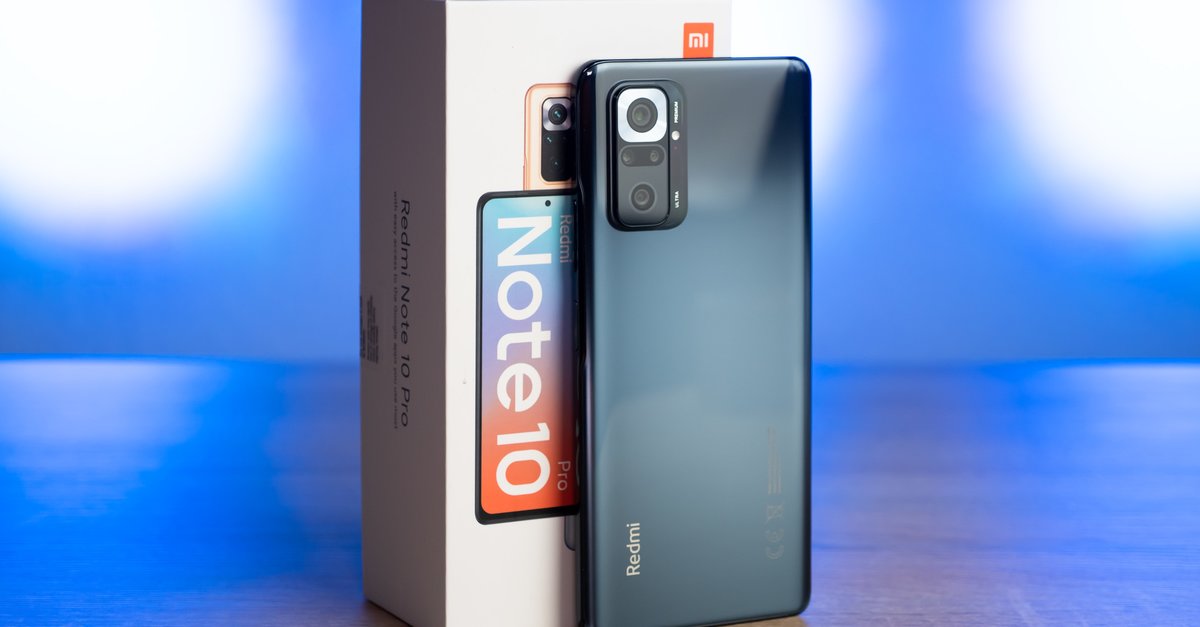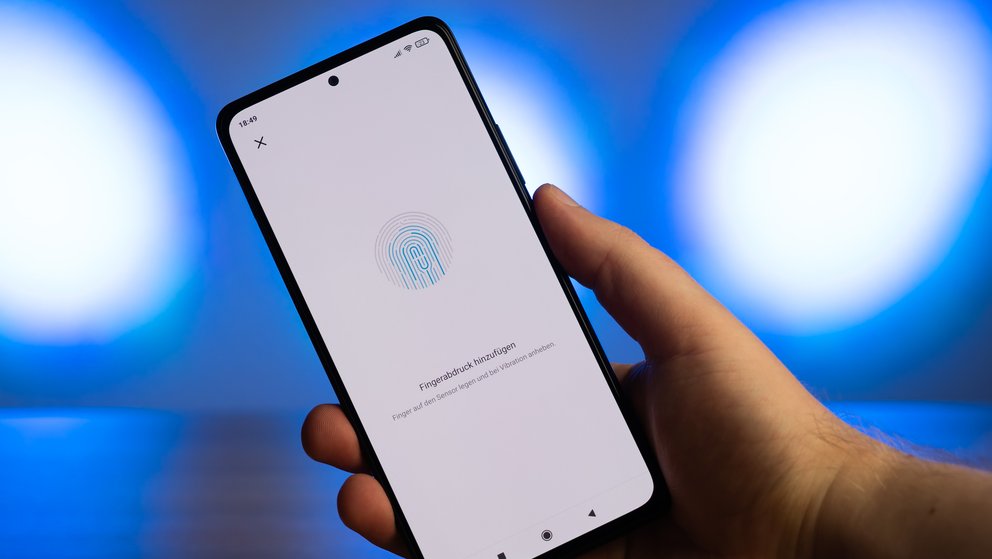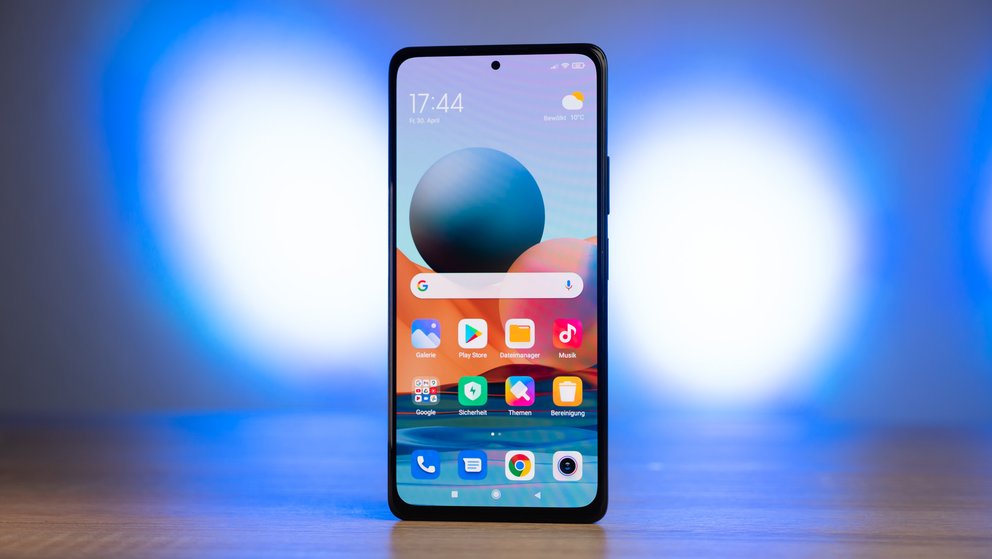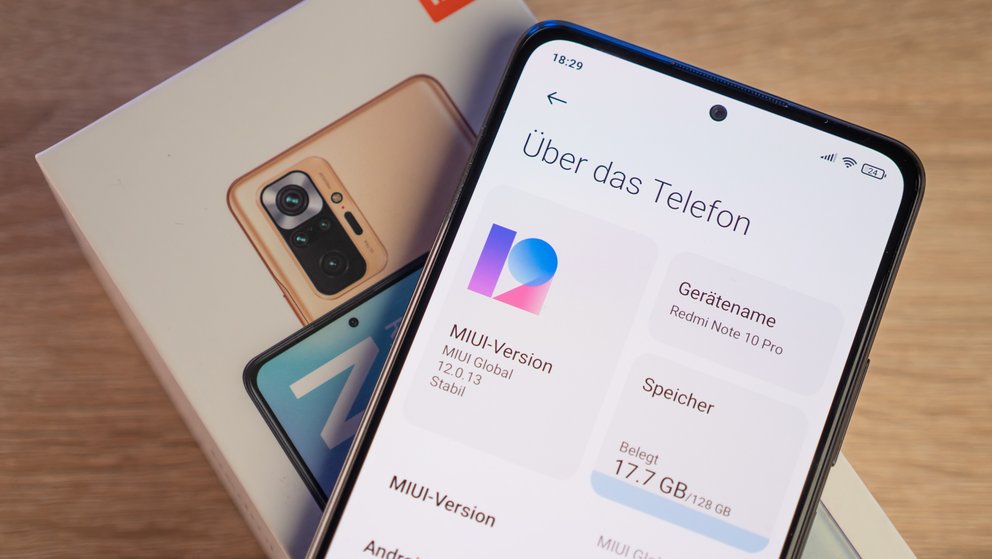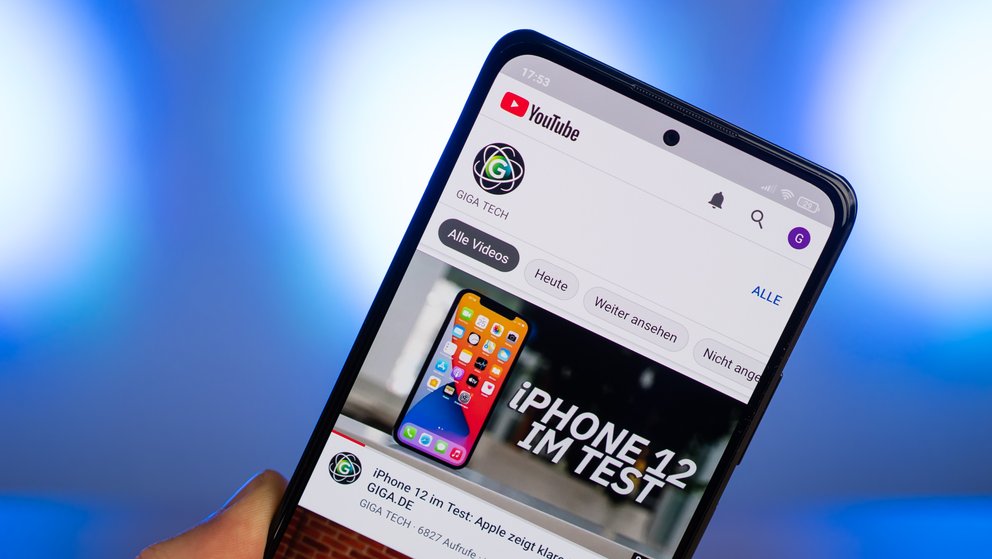The price-performance hit from China is really that good
Xiaomi has struck again with the Redmi Note 10 Pro – at least when it comes to the price-performance ratio on paper. But does the cheap smartphone from China convince with the 108 MP camera and the 120 Hz display? This is exactly the question we are investigating in the test of the Xiaomi Redmi Note 10 Pro.
Contents
- 1 Xiaomi Redmi Note 10 Pro in the test: conclusion
- 2 Xiaomi Redmi Note 10 Pro: design and workmanship
- 3 Xiaomi Redmi Note 10 Pro: display and speakers
- 4 Xiaomi Redmi Note 10 Pro: performance and software
- 5 Xiaomi Redmi Note 10 Pro: camera tested
- 6 Xiaomi Redmi Note 10 Pro: battery life
- 7 Ratings and technical data
Xiaomi Redmi Note 10 Pro in the test: conclusion
GIGA rating: 7.8 / 10
Xiaomi has built a real price-performance hit with the Redmi Note 10 Pro. The fast and bright display was particularly impressive in the test. The performance is good, the 108 MP camera takes decent photos and the large battery makes it easy to get through the day. Xiaomi also did not save on the choice of materials and workmanship. This is not a matter of course in the price range of less than 300 euros. The triple SIM slot is also a great feature. There you can insert two SIM cards and an additional memory card. Samsung recently rationalized this away with the Galaxy A52.
But you also have to Redmi Note 10 Pro make some compromises. The smartphone doesn’t always feel as fast as it should feel with the 120 Hz display. The battery life is good, but not great, as you might expect from the 5,000 mAh battery. The camera’s 108 MP sensor is convincing, but you have to pay attention to the lighting conditions. Otherwise, it quickly becomes noticeable that the optical image stabilization is missing. The zoom is also not optimal without a telephoto lens.
Overall, that got me Xiaomi Redmi Note 10 Pro convinced in the test. At a price of less than 300 euros you have to make some compromises, but these are absolutely manageable with this smartphone.
Advantages:
- 120 Hertz display
- camera
- Battery life
- 3.5 mm jack connection
- Dual SIM and memory expansion
- IR transmitter
- price
Disadvantage:
- weight and height
- No OIS on the camera
- No 5G modem
- Fingerprint sensor
Xiaomi Redmi Note 10 Pro: design and workmanship
Visually, the Xiaomi Redmi Note 10 Pro is really successful. Although it is offered at a price of well under 300 euros, it looks like a premium cell phone. If you pick up the device for the first time, you will be surprised. The glossy back feels more valuable than you might expect at first. The frame is made of plastic, but it doesn’t look cheap. You quickly notice that you have a really big smartphone with a big battery in your hand. The Redmi Note 10 Pro weighs an impressive 193 grams, but since the battery is 5020 mAh and the display measures 6.67 inches diagonally, that’s absolutely fine. One-handed operation is still possible with large hands. I used two hands for the most part, because the slippery back just seemed safer. A cover is included so that you can quickly get the problem out of the way.
The camera on the back protrudes clearly from the housing. As soon as you put the Redmi Note 10 Pro on the table, the phone wobbles noticeably. Otherwise there is nothing to complain about. You have a 3.5 mm jack, the USB-C port and even an IR transmitter is availablewhich turns the smartphone into a remote control. The processing quality of our test device in gray is convincing in every aspect. The phone doesn’t feel cheap at all, unlike previous Redmi devices. The choice of material is very successful for the price range.
With the fingerprint sensor attached to the side, I just didn’t get warm during the entire test period. Xiaomi installed this on the right side. Basically I have no problem with the position, but the button with the sensor hardly protrudes from the housing, so that it is difficult to feel the position. I could never decide how to unlock the phone, so at some point I switched to the pattern. In itself, the fingerprint sensor works very well.
Xiaomi Redmi Note 10 Pro: display and speakers
Xiaomi installs a 6.67-inch AMOLED display in the Redmi Note 10 Pro, which has a resolution of 2,400 x 1,080 pixels and supports 120 Hz. The 120 Hz are not activated at the factory. So if you want to exploit the full potential of the display, you have to switch the option on manually, otherwise you will be traveling at 60 Hz. The display is fundamentally convincing. Colors appear powerful when you switch on the saturated mode. In the preset automatic mode, where the colors are based on the environment, everything looks a bit slack for an OLED display. Here you have to orientate yourself according to your own preferences. The brightness of the panel is very good for the price range. Only the brightness sensor works a bit slowly and cautiously. I often had to adjust the brightness upwards because the display was too dark for me in many situations.
Although the Redmi Note 10 Pro is so cheap, it has Xiaomi stereo speakers installed. The sound is okay considering the price. Of course, like almost every cell phone, you want more bass and volume, but you can listen to music and watch YouTube videos without any problems. I was surprised at the volume. Some smartphones are as loud as the Redmi Note 10 Pro at half volume. I didn’t dare turn it up completely.
Xiaomi Redmi Note 10 Pro: performance and software
In the first few days with the Redmi Note 10 Pro, I was a bit disappointed. The display supports 120 Hz, but the smartphone did not feel as fast as one would expect with this characteristic. Especially when scrolling in the Chrome browser and a few others Situations, the presentation is not quite as fluid. Perhaps my expectations in this price range are a bit too high, but the direct competitor, the Galaxy A52 (5G) with 120 Hz display, felt faster. You hardly ever felt this disadvantage in games, only when you switched to another app did you get stuttering. Xiaomi definitely still has room for improvement here. It is quite possible that a more powerful processor would have helped. Xiaomi uses the Snapdragon 732G instead of the Snapdragon 750G.
I got the Redmi Note 10 Pro with MIUI 12. In the last few days I was able to install MIUI 12.5 with a trick. Basically, I have to admit that I hadn’t tested a Xiaomi phone for a long time and was therefore curious to see how the software had developed. You can still tell here and there that Xiaomi is based on Apple and iOS. This has advantages and disadvantages. Some points still do not seem completely thought out.
As with every smartphone, I wanted to change the time at which the display goes to sleep. You can usually find this option under Settings and Display. Not so with Xiaomi, namely an additional item “Always on display and lock screen” has been created where you can change this setting. What for? Why can’t I change this under Display like with any other manufacturer, but have to integrate such a long option in the settings? There are quite a few examples of this. I have the feeling that Xiaomi wanted to simplify the settings, but thereby made them unnecessarily complicated. Less is more here.
The Always-On-Display does not do justice to the name of the Redmi Note 10 Pro. It is not always active, no matter what you set. Xiaomi would like to reduce the energy consumption somewhat, but promises a function that does not exist. You can’t even increase the time the information is displayed. Either you are satisfied with 10 seconds or you can switch it off. One would like more leeway here.
Otherwise you get a good operating system based on Android 11 with MIUI 12.5 on the Redmi Note 10 Pro. I didn’t feel the speed boost that should come with MIUI 12.5 compared to MIUI 12 in a direct comparison. Maybe that’s more for the high-end smartphones.
Xiaomi Redmi Note 10 Pro: camera tested
Although the Redmi Note 10 Pro is so cheap, Xiaomi has one 108 MP camera installed. This also takes great pictures in good lighting conditions. If it gets darker and the shutter lag increases, you have to have a steady hand to always get sharp results, as there is no optical image stabilization. This is also clearly noticeable when you use the zoom or record a video. The Image stabilization is missing here. A telephoto lens is also missing. Instead you have a macro and depth sensor. This unnecessarily restricts the intended use. Every digital enlargement deteriorates the image quality. The camera with super wide angle produces good pictures. But even here you have to pay attention to the lighting conditions. Below are some photos that we took with the Redmi Note 10 Pro.
Xiaomi Redmi Note 10 Pro: battery life
Xiaomi installs a 5,020 mAh battery in the Redmi Note 10 Pro, which can be quickly recharged with a maximum of 33 watts via cable. There is no wireless charging function. But you can’t expect it in this price range. The battery life is okay. I came with normal use throughout the day and still had a small reserve of 20 percent. If you use your mobile phone sparingly and only use the 60 Hz mode, you will surely get 1.5 days. With such a large battery and processor, I would have expected more. But I also understand that the 120 Hz mode and bright display draw a lot of energy.
Ratings and technical data
GIGA test evaluation in detail: Xiaomi Redmi Note 10 Pro
| category | Rating (max. 10) |
| Processing, feel and design | 9 |
| Display | 8th |
| Cameras | 7th |
| software | 8th |
| performance | 7th |
| Telephony and audio | 8th |
| Storage | 8th |
| Battery and everyday life | 7th |
| total | 7.8 |
Specifications: Xiaomi Redmi Note 10 Pro
| operating system | Android 11, MIUI 12 (12.5) |
|---|---|
| Display | 6.67-inch AMOLED DotDisplay / 2,400 x 1,080 pixels / 395 ppi / 120 Hz |
| processor | Snapdragon 732G (2.3 Ghz) |
| R.A.M. | 6 GB |
| Internal memory | 128 GB (+ MicroSD) |
| camera | 108 MP wide angle / 8 MP ultra wide angle camera / 5 MP tele macro camera / 2 MP depth sensor |
| battery pack | 5020 mAh |
